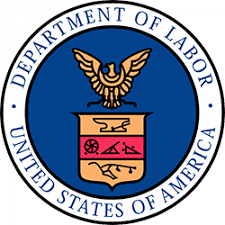The American Rescue Plan Act of 2021 (ARPA), signed by President Biden on March 11, 2021, includes a voluntary 6-month extension of the refundable tax credits available to employers for providing Emergency Paid Sick Leave (EPSL) and Emergency FMLA (EFMLA) under the Families First Coronavirus Response Act (FFCRA). For employers that want to take advantage of the extension, the ARPA also expands the EPSL and EFMLA paid leave entitlements that must be provided.
Background
The FFCRA paid leave provisions, which required employers with fewer than 500 employees to provide paid EPSL and EFMLA paid leave, originally expired on Dec. 31, 2020. The tax credits covering the cost of EPSL and EFMLA paid leave were extended through March 31, 2021 (see our post here), helping employers to voluntarily continue providing such paid leave for employees who did not use up all of their paid leave entitlement by December 31, 2020.
The ARPA Extension and Expansion
An employer’s decision to extend EPSL and EFMLA paid leave is entirely voluntary. Employers are, therefore, not required to take any action in response to this aspect of the ARPA.
However, employers wishing to take advantage of the refundable tax credits will need to comply with the EPSL and EFMLA requirements, as modified by the ARPA. Employers should note the following key points in this regard:
- The employer must provide every employee with a new grant of 10 days of Earned Paid Sick Leave as of April 1. This is 80 hours for full time employees and is pro rated for part time employees, as under the original FFCRA.
- The qualifying reasons for leave are expanded. There were originally 5 qualifying reasons for an employee to take EPSL, including
- three “personal” reasons: the employee is (1) subject to government quarantine or (2) has been advised by a health care provider to self-isolate or (3) is experiencing COVID-19 symptoms and is seeking a diagnosis, and
- two “caring” reasons: the employee is (4) caring for someone who is subject to one of the three “personal” COVID-19 issues or (5) is caring for a child whose school or place of care is closed or unavailable due to COVID-19 precautions.
- EFMLA paid leave (i.e. paid leave after the first two weeks of EPSL) was only available for the two “caring” reasons).
- The ARPA expands the qualifying reasons for paid leave in two ways:
- The ARPA makes the three “personal” qualifying reasons for paid EPSL leave also available for paid EFMLA leave.
- The ARPA adds three new “personal” reasons for taking paid EPSL and EFMLA leave:
- the employee is seeking or awaiting the results of a diagnostic test for, or a medical diagnosis of, COVID–19 and such employee has been exposed to COVID–19 or the employee’s employer has requested such test or diagnosis, or
- the employee is obtaining immunization related to COVID–19 or
- the employee is recovering from any injury, disability, illness, or condition related to immunization related to COVID-19
- The tax credit is available on paid leave taken with respect to the period from April 1 to September 30, 2021. An employer that elects to extend the EPSL and EFMLA paid leave can claim the credit for qualifying leave paid “with respect to the period beginning on April 1, 2021, and ending on September 30, 2021.” This covers leave taken between April 1 and September 30, even if the wages are paid after September 30 (i.e. on the last payroll covering the period up through September 30, 2021)
- The aggregate amount of EFMLA wages that can be subject to the credit increased from $10,000 per employee to $12,000.
- The first 10 days of EFMLA leave is now paid leave. Under the original FFCRA the first 10 days of EFMLA leave was unpaid (because it was paid as EPSL). Accordingly, the total available paid EFMLA leave is extended to 12 weeks (from 10). The law therefore appears on its face to require payment of both EPSL and EFMLA leave concurrently during the first 10 days, but this is unlikely the intention. More likely, the intention is to provide an additional 10 days of paid leave in total, on top of whatever an employee had “left over” when their EPSL and EFMLA leave entitlement otherwise expired (December 31, 2020 unless voluntarily extended to March 31, 2021).
- The employer need NOT have voluntarily extended its EPSL and EFMLA leave policies to March 31, 2021 in order to take advantage of the new extension. expired on
- The employer must comply with all of the requirements of the FFCRA paid leave law (notice, documentation of leave requests and approvals, no retaliation for taking leave, etc…)
- The ARPA explicitly denies a double tax benefit to the employer, providing that the employer’s gross income shall be increased by the amount of the tax credit received.
- The extension includes a non-discrimination provision that disallows the credit for any employer that discriminates “with respect to the availability of the provision of qualified sick leave wages” in favor of:
- highly compensated employees (within the meaning of Code section 414(q)),
- full-time employees, or
- employees on the basis of employment tenure with the employer.
- The credit does not apply to amounts that are taken into account as payroll costs in connection with certain specified relief programs:
- a covered loan under section 7(a)(37) or 7A of the Small Business Act,
- a grant under section 324 of the Economic Aid to Hard-Hit Small Businesses, Non-Profits, and Venues Act, or
- a restaurant revitalization grant under section 5003 of the American Rescue Plan Act of 2021.
Next Steps
Employers wishing to adopt this latest extension and expansion of the FFCRA paid leave program will need to revise their policies and related leave request and leave determination forms and procedures. If you used ERISA Benefits Law’s model EPSL/EFML Policies, Leave Request Form and Leave Determination Form to administer your FFCRA paid leave program in 2020, email your contact at the firm to get details on how we can assist you in efficiently updating those documents to implement the extension.




